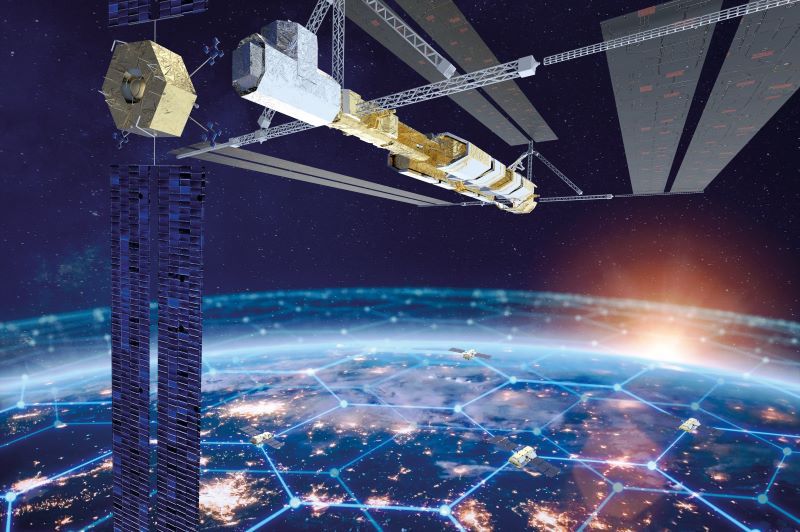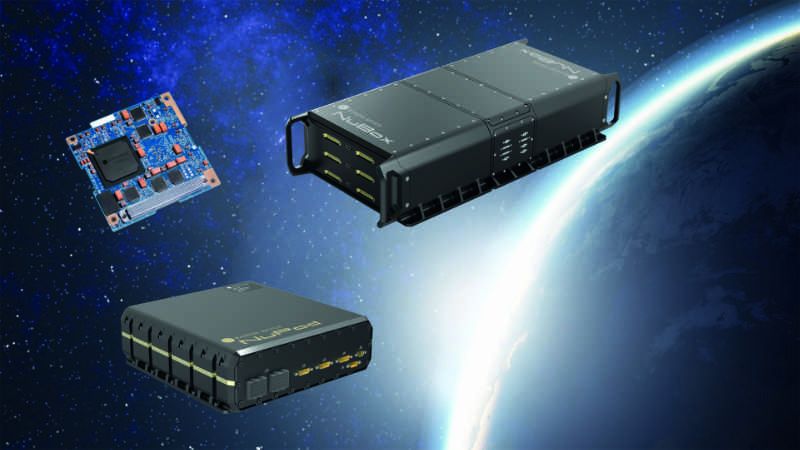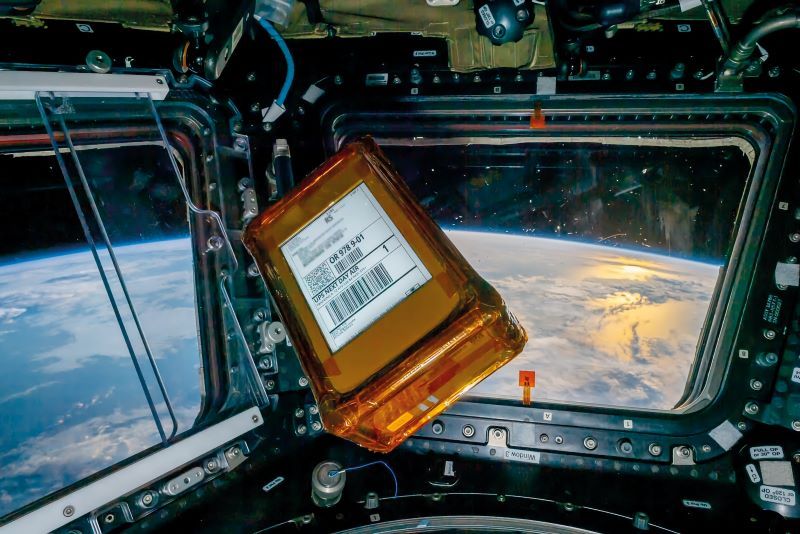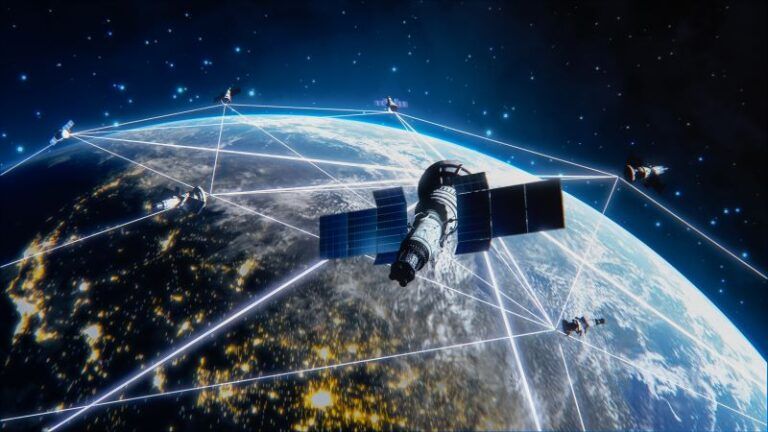Ironically, cloud data centers are large, earthbound facilities with a real world impact on energy security, but this may be about to change. Servers and data centers based above the Earth in orbit could offer a new way to ensure sustainability, efficiency and enhanced quality of data storage and digital provision.
Terrestrial data centers have major issues, such as their high energy usage and carbon footprint. These are especially pertinent as sustainability and energy security are important topics across the world. Globally, data center electricity consumption is greater than that of some entire countries. A 2020 EU Commission report found that data centers accounted for 2.7% of the EU’s total electricity demand and that consumption is expected to reach 3.2% by 2030. Meanwhile, states with a cloud-first policy for storing data are likely to be most vulnerable to energy drain. According to an International Energy Agency report, Ireland’s data centers accounted for 14% of its total electricity use in 2021, three times the amount they used in 2015.
Ascend into space
In some scenarios, the total energy use of data centers reaches 20% of global energy demand. A gradual move of digital infrastructure off-planet could reduce the energy drain from data centers and the carbon footprint of the infrastructure on earth because the orbital space stations would use solar power. The move would also provide valuable opportunities to exploit and grow the space industry.
The feasibility of putting data centers into orbit is the focus of a study by a consortium of stakeholders led by Thales Alenia Space under the umbrella of the EU’s ASCEND (Advanced Space Cloud for European Net zero emission and Data sovereignty) project.
Yves Durand, director of technologies at Thales Alenia Space says, “We need to end fossil fuel dependence, but renewable energy will have its limitations. If no other solution is found, data usage will have to be strictly restrained.”
There is also a security benefit to storing data in orbit if there is a sufficiently resilient and cyber-secure architecture. ASCEND is funded by the European Commission’s Horizon Europe research program. Environmental specialists Carbone 4 and Vito, cloud and data centers specialists Orange, CloudFerro and HPE, space robotics experts from German aerospace research agency DLR, launcher manufacturer ArianeGroup and space systems experts from Airbus and Thales Alenia Space are all participating.
The goal of ASCEND is to demonstrate that placing solar-powered data centers in orbit will substantially lower the carbon footprint of digitalization.

“Space data centers could therefore become an active contributor to the EC Green Deal objective of carbon neutrality by 2050, which would justify the investment required to develop and install such a large space infrastructure system,” explains Durand.
The key technologies involved in installing orbital data centers include heavy lift launchers, robotic in-orbit assembly and operations, high-power sun stations, radiation-resistant electronics and space optical feeder links.
Much of the technical challenge and testing is associated with the development of heavy-lift reusable launchers and the capability to send payload containers into orbit and back with low environmental impact. Other challenges include the development of mass-produced space-rated data center servers, high throughput optical feeders, and the robotized assembly in-orbit of large space infrastructures.
ASCEND began at the start of this year and the feasibility results should be available by the spring of 2024. If positive, the plan is to develop and fly demonstrators from around 2035, in an effort to help achieve the EU’s 2050 carbon neutrality target date.
Durand says, “The carbon and environmental impact of the necessary launches will be quantified and compared with the carbon emissions of the equivalent ground data center infrastructure, to see if a substantial gain towards net zero emissions can be achieved.”
The large structures will be assembled in space using robots and will have to include spare parts to ensure proper functioning. Maintenance is predicted to be achieved through onboard failure detection systems and robotics server module swaps. “A ‘to and from’ space capability applies particularly well to the case of modular data centers, including the potential of warehousing – where the launcher brings up new or upgraded modules – which are then delivered to the data center using a transfer vehicle. This is currently being studied by ESA,” says Durand.
“The management of data security would be like standard data centers,” he adds. “The data transmission will use RF and high-capacity optical feeder links to ground nodes interfacing with the internet. There may be a need for data relays, using for example a LEO constellation.”
Data in orbit
Satellite company OrbitsEdge puts data centers into orbit that process and analyze data that is created in space. “Players in the terrestrial data world want to see their products deployed in space environments as the space data sector matures,” says Rick Ward, OrbitsEdge’s founder and CEO. “Space data could grow to be bigger than terrestrial, and they don’t want to get left behind.”
OrbitsEdge is building three core product lines: 10W – focusing on analytics and AI applications, 100W, and 1000W – including the HPE EL8000 rugged edge micro server, featuring radiation shielding / thermal management coupled with hardware redundancy and software to mitigate radiation effects. “We are working to launch in January for our 10W product, so this involves significant testing and building. The 1000W is under development and work on the 100W will start after the January launch,” says Ward.
Three types of testing are currently being applied to the OrbitEdge equipment: shake / vibration testing to prove the product can survive launch; thermal testing to verify the system can dissipate waste heat in space, and radiation testing to demonstrate that the solution provides the protection claimed and that mitigation efforts are effective.
“Our architecture involves full redundancy for reliability and extended lifespans,” says Ward. “We will flow from the 10W to the 1000W and the 100W in the next few years. We expect to be flying all of them within five years.”
Celestial servers
The concept of interplanetary offshoring can be applied to all digital infrastructure. Ramon Space equips satellites with computers that have the advanced storage, processing power, and connectivity capabilities needed to run data-driven applications in space.
Computers in space must be designed and tested to operate in harsh environments, which include radiation, vacuum and extreme temperatures, says Avi Shabtai, CEO of Ramon Space. “There is no option to physically maintain computers in space. They must be highly durable, fully programmable to enable long mission lifetime, and flexible, because failures can be disastrous for the mission.”
A major benefit of in-orbit processing and storage is a reduction in the amount of raw data transmitted to the ground, avoiding bottlenecks in transmission.
“With instant access to data, informed decision-making is made possible, further optimizing business use cases for space,” explains Shabtai.
Ramon Space products will work within the servers in a space environment but have been designed to do more, including full support of the store, compute and move data elements required for a Data Centers in Space (DCiS) environment that would work throughout our solar system. Shabtai believes that it is crucial to use systems that are specifically designed for such an environment. “Terrestrial systems simply won’t cut it,” he says.

(Photo: Ramon Space)
Operating computers in space poses many technical challenges. For example, they require low electrical power usage due to the limited power available in space. Maintenance in space relies on a replace-by-relaunch approach for subsystems. However, advanced systems are equipped with self-recovery capabilities, minimizing the need for maintenance.
Transmitting data from space is also a complex process, with limitations in bandwidth. To address these challenges, onboard processing is used to efficiently transmit only the necessary information.
However, Shabtai believes the space market is going through a period of change and that computing capabilities will be the foundation for all new services and applications that will serve the new space economy. “The expectation is that this will impact the space industry significantly, creating an opportunity for newcomers to grow their business.”
A benefit of implementing computation in space is to enable remote decision-making without need for on-ground intervention. “This will enable autonomous spacecraft that can gather important insights from data being generated by sensors and other innovative equipment,” explains Shabtai.
Another company, Axiom Space, works with cloud service providers and companies in space communications and data to develop and operationalize initial space server infrastructure. In April 2022, it integrated an AWS Snowcone edge computer into the International Space Station (ISS) as part of Axiom Space’s first all-private astronaut mission.
The company is currently building the world’s first commercial space station. “Once constructed as a new segment of the ISS, Axiom Station will separate
when the ISS is decommissioned and facilitate commerce in space, offering access to countries, institutions, industries, and individuals with new ideas fueling a human economy beyond Earth,” says Jason Aspiotis, director of in-space infrastructure and logistics at Axiom Space.

Space to grow
Most experts predict that the future exploitation of the solar system will be self-sustaining and undertaken robotically and digitally without the need for human input.
Devices and concepts that are part of the so-called Fourth Industrial Revolution – autonomous vehicles, digital twins, VR and AI are all useful on Earth, but essential in space.
The time may come soon when the entire data powerhouse of the planet will not be located on it.
Computers go orbital
In 2017, the Hewlett Packard Enterprises (HPE)Spaceborne Computer was sent to the International Space Station to test if COTS servers equipped with purpose-built software-based hardening features could withstand the shake, rattle and roll of a rocket launch and operate on the space station.
The HPE team developed 145 safety test reports and submitted them to NASA as part of its certificate of flight readiness requirements. Once launched and installed on the ISS, the system was monitored remotely with diagnostics tests through a dashboard as necessary for health checks.
The Spaceborne Computer, which achieved over one trillion calculations per second, showed it could operate under harsh conditions. Mark Fernandez, principal investigator for Spaceborne Computer 2 and chief scientist for space technologies and solutions at Hewlett Packard Enterprises (HPE) says, “After completing its one-year mission, HPE opened the system up to NASA Langley’s Entry Descent and Landing team to test and run code for future computing capabilities required for Mars landings. The Spaceborne Computer executed the code more than 2,000 times without a single bit error.”
The HPE Spaceborne Computer returned to Earth in June, 2019. In 2021, the upgraded Spaceborne Computer-2 was launched with additional AI and machine learning capabilities.
Improvements include better connectivity between the four Spaceborne Computer systems and modern and reliable SSDs. This is in addition to the newest x86 processors, lower power GPUs for AI/ML and a more efficient liquid cooling system. The team is currently testing 10GB Ethernet interfaces that are internal to the Spaceborne Computer.





